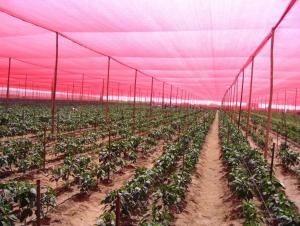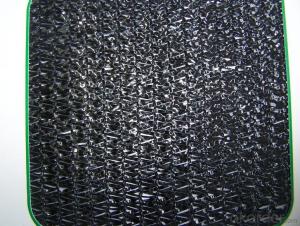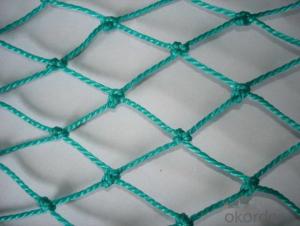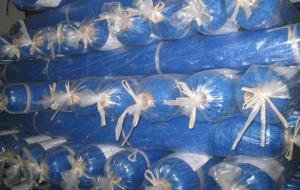Plastic Nets Coverground for Cultivating All Kinds of Plants
- Loading Port:
- China main port
- Payment Terms:
- TT OR LC
- Min Order Qty:
- 50000 m²
- Supply Capability:
- 20000000 m²/month
OKorder Service Pledge
OKorder Financial Service
You Might Also Like
1. Strong and Durable, anti-corruption.
2. Air-ventilation , UV-protection and anti-weather.
3. Weed-control and keep soil moist, ventilation.
4. Long serving time, which can give 5-8 year guarantee time.
5. Suitable for cultivating all kinds of plant.
Product Description:
1. Material: PP, virgin material or recycled material.
2. Weight: 63gsm-200gsm
3. Width: 30cm-500cm
4. Length: As per ur request.
5. Color: Black with green/white grid,or any color is
available.
6. Tearing strength: From 0.5 to 2.2kN
7. Mesh: 8*8,9*9,10*10, 11*11,12*12,13*13,14*14
8. UV stabilized: Up to your request.
9. Packing: In rolls (25m,50m,100m,200m,500m,
1000m,2000m) or pieces.
10. Quantity:12ton/20',25ton/40'
11. Delivery time: 25-35 days.Function:
12. Payment Term: L/C, T/T(30% of total amount deposit
and 70%).
13. MOQ:1X20'
- Q: Are plastic nets suitable for use in greenhouse structures?
- Yes, plastic nets can be suitable for use in greenhouse structures. They can provide shade, protect plants from pests, and allow for air circulation. Additionally, plastic nets are cost-effective and durable, making them a popular choice among greenhouse growers.
- Q: How are plastic nets used in agriculture?
- Plastic nets are commonly used in agriculture for various purposes such as crop protection, shading, and support. They are often used to cover crops to protect them from pests, birds, and extreme weather conditions, while still allowing air and light to pass through. These nets also offer shading and temperature control for delicate plants. Additionally, plastic nets are used for supporting climbing plants like beans, cucumbers, and tomatoes, providing them with necessary structural support as they grow.
- Q: Can plastic nets be used for packaging fragile items?
- Yes, plastic nets can be used for packaging fragile items. The netting structure provides a protective layer around the fragile object, minimizing the risk of damage during transportation or handling.
- Q: Are plastic nets suitable for use in bat houses?
- No, plastic nets are not suitable for use in bat houses. Bats can easily get entangled in plastic nets, which can cause serious harm or even death to these flying mammals. It is recommended to use natural materials, such as wood or mesh, that provide a safe and secure environment for bats in bat houses.
- Q: How do plastic nets perform in snowy conditions?
- Plastic nets generally do not perform well in snowy conditions as they can become brittle and break due to the cold temperatures. Additionally, the snow can accumulate on the nets, making them less effective in their intended purpose, such as containing debris or protecting plants. Therefore, it is advisable to consider alternative materials or remove the nets during snowy weather.
- Q: Can plastic nets be used for animal containment?
- Yes, plastic nets can be used for animal containment. They are commonly used in various settings such as farms, zoos, and fisheries to create enclosures and fences that keep animals safely contained. Plastic nets are lightweight, durable, and flexible, making them an effective choice for animal containment.
- Q: Can plastic nets be used for aquaponic systems for fish containment?
- Yes, plastic nets can be used for aquaponic systems for fish containment. These nets are commonly used to create partitions within the system to separate different fish species or to prevent fish from escaping. They allow water and nutrients to flow freely while providing a physical barrier for containment purposes.
- Q: Are plastic nets used in the manufacturing of sports equipment?
- Yes, plastic nets are commonly used in the manufacturing of sports equipment. They are often used in products such as soccer goals, basketball hoops, and tennis nets to provide durability and strength.
- Q: What are the different colors of plastic nets available?
- The different colors of plastic nets available vary greatly depending on the manufacturer and purpose. Some common colors include black, white, green, blue, and orange, but there are also other shades and custom colors available upon request.
- Q: How do plastic nets help in controlling weed growth?
- Plastic nets are used in controlling weed growth by acting as a physical barrier. These nets are placed on the ground to cover the soil, preventing sunlight from reaching the weed seeds and inhibiting their germination. Additionally, plastic nets also help in reducing water evaporation from the soil, creating a drier environment that is unfavorable for weed growth.
Send your message to us
Plastic Nets Coverground for Cultivating All Kinds of Plants
- Loading Port:
- China main port
- Payment Terms:
- TT OR LC
- Min Order Qty:
- 50000 m²
- Supply Capability:
- 20000000 m²/month
OKorder Service Pledge
OKorder Financial Service
Similar products
Hot products
Hot Searches
Related keywords


























